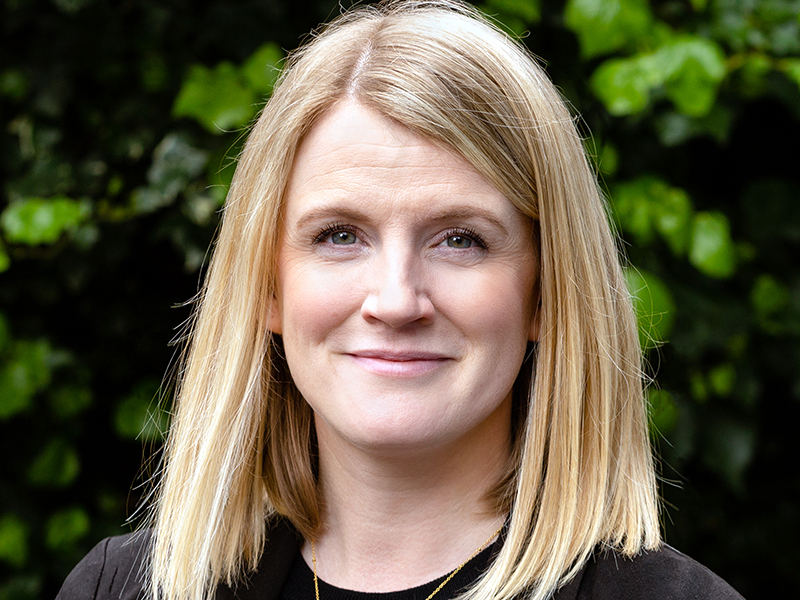Time commitment, confidence and experience are often cited as reasons for not becoming a charity chair - even among the ideal contenders. But what if the load were shared? Lawyer Helen Kidd explores the rise of the co-chair
The most frustrating thing when charities are seeking a new chair can be when the people you know would be best for the job say they simply cannot commit to it.
You know they would be great. They are, most likely, people who you know feel empowered and impassioned by what you do. And, so often, they are people who would actually like to do the job and may even enrich your group with much-needed diversity - if only you could help realise or develop their skills and help manage their time to do the role.
Appointing a chair can often be as difficult as the wider challenge of trustee recruitment generally.
Would your prime candidate’s mind change, though, if the opportunity emerged for them to share the load with someone like-minded?
Have you two people who could prove the dream ticket for your organisation?
Should you consider appointing a co-chair?
After all, two heads are better than one, as the old saying goes.
As we celebrate the huge contribution charity trustees make to Scottish causes and life as part of Trustees’ Week, it’s worth reflecting on the doors that having a co-chair could open, particularly as an increasing number of charities realise the benefits and adapt, where needs be, to make them possible.
Putting yourself forward as chair can be daunting. Sometimes those being encouraged to go for the role are not confident they have the experience or energy for the role. Having someone beside them may be just what edges them towards saying ‘yes’.
Just because you have not had one before, does not mean that you cannot introduce the role now.
The benefits can be great - taking time as a starting point.
I’ve seen different charities organise things in different ways, for example, co-chairs could split the number of board meetings they chair, helping reduce the preparation that the leadership role might require. There is also a greater ability to grow the ambassadorial role of a chair but increasing the events, PR and meetings attended.
Sharing the responsibilities of leadership can also mean working to each other’s strengths - taking the lead on issues and areas of decision-making which best suit their individual skills, rather than consuming everything.
One of the greatest advantages I’ve seen in co-chairing is with the third voice. Normally, conversations between the chair and chief executive, for example, are simply two-way. A co-chair brings an added dimension to that; another perspective which may prove invaluable in discussions around the biggest strategic issues facing the organisation.
There are, of course, challenges to consider - and having a co-chair will not be the right approach for every charity.
You want the advantage that an additional perspective can bring to the role. But you do not want differing visions or priorities to hamper decision-making or, at worst, cause confusion.
The recruitment process - and setting the right job description for the co-chairs - is key to managing the risk around that.
Ensuring you get two people with a shared vision for the organisation is the critical first step. Being clear in the roles and responsibilities of each - and communicating that with board members, staff and other stakeholders - is equally as important.
If you are clear in whose job it is to make what decisions, it makes it far easier to enhance efficiency and present a united front from leaders, building confidence on so many levels.
Co-chairing can also play its part in succession planning, perhaps allowing someone with less experience to get hands-on alongside someone who is more seasoned in the role - meaning that, while future-proofing your board it also reduces the risk of disruption when one leader departs. Identifying and supporting potential candidates is so important.
Getting into the nuts and bolts of co-chairing, it is important that governance documents and procedures are reviewed and adapted - if necessary - to take account of the job descriptions and, crucially, with whom decisions of final resort lie. If you have a co-chair, do you need a vice-chair? It’s important to take professional advice to ensure these comply with regulatory requirements.
The adage of asking a busy person if you want something is truer in the charitable sector than it is in most other places.
Yet perhaps those busy people to whom organisations turn to take the lead may be more inclined to step into the chair if they could find a way of working which helps everyone achieve the best of both worlds, easing any concerns they may have. Sharing the chair may well be the answer for some.
Helen Kidd is a partner and head of the Charities and Third Sector team at legal firm Lindsays.







